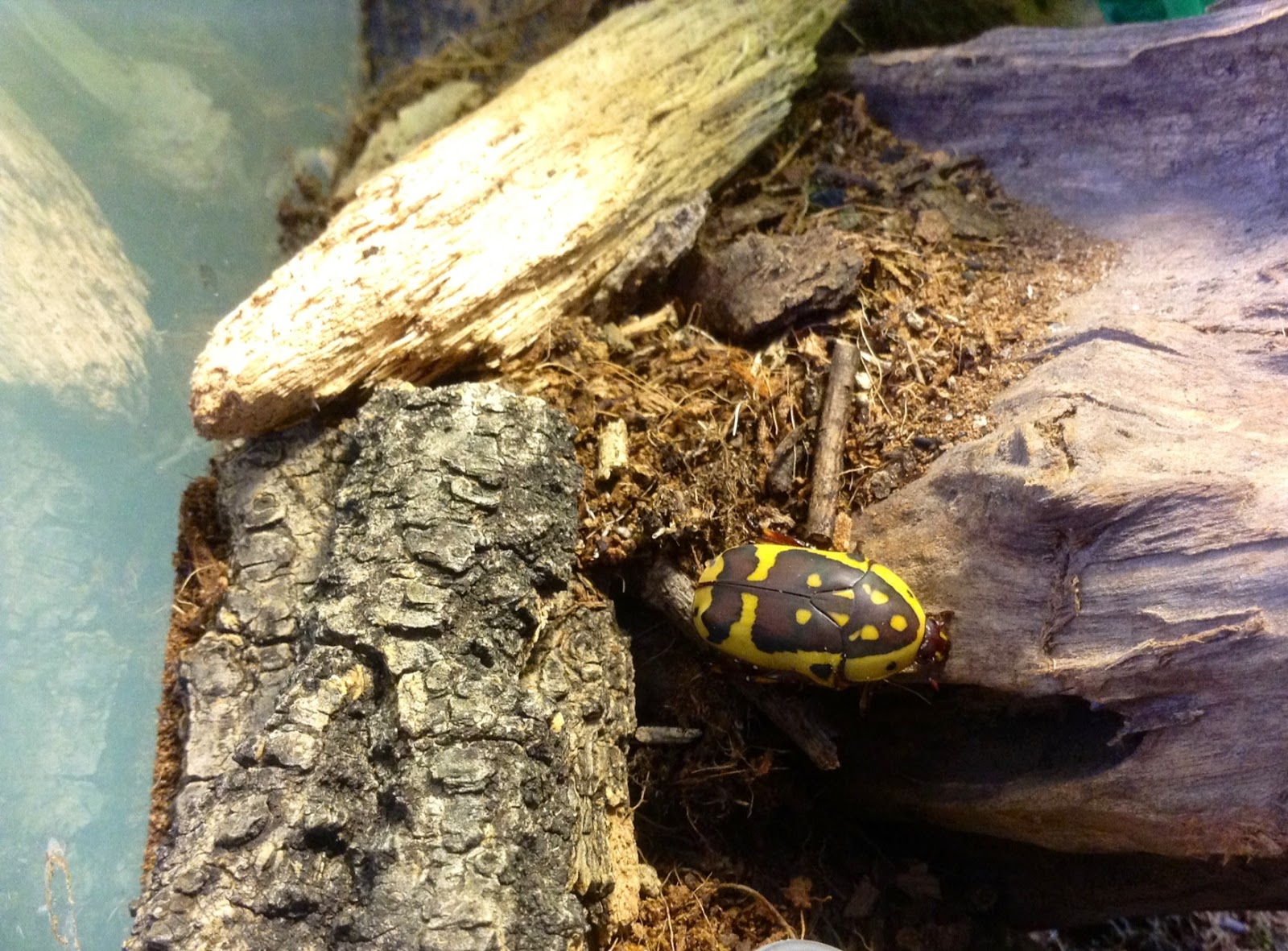Let's
face it, tadpoles are pretty cool. They undergo metamorphosis, a very
interesting aspect of nature! Metamorphosis is the process of a species
changing into another form. A tadpole, for instance, will eventually
develop legs and leave the water entirely. But, unlike some other
species that undergo metamorphosis, the tadpole actually has control
over its change. A tadpole that spends a great deal of time in a
shallow, warm area of the pond, stream, or lake will metamorphose
quicker, were as an individual in the dark, cool, and deep area will
develop slower. If the water level starts to drop, the creature will
sense this and start to develop legs! And what's surprising is that
these creatures actually make a decision on whether or not they should
metamorphose. They judge whether the water is becoming dangerously low!
Also, if an individual is killed and eaten, it will send out a distress
hormone, which will promote the other tadpoles to start to metamorphose
quicker!
Another
interesting species that undergoes metamorphosis is the butterfly. The
larvae, or the caterpillar as it's more often called, will often shed its skin in order to grow. But one day, the caterpillar will hang upside down from a twig, attached by a strand of silk, and shed its skin for the last time. This will fall away to reveal a strange, legless form.
This is the chrysalis. It will stay totally motionless, yet inside its skin, the creature has broken itself down to a sort of soup of
its own cells. For a moment, let's imagine we have a set of building
blocks. We make something out of it, the caterpillar, then we take it
apart again. Then, using the same building blocks, we create something
else, a butterfly. And that's what is going on with the caterpillar's
metamorphose. It's cells are simply being rearranged. Then, when the
butterfly has been built, it emerges from the chrysalis to start a new
life. What's so very amazing about this, is that despite being torn apart
and rearranged, the caterpillar and the butterfly are still the same
species and the same individual! This has been proved by scientists
examining the unique genetic code of a certain individual! For more
information, I recommend that you watch the fifth episode of the Alien Nation series, called Metamorphosis: The Science Of Change, with David Malone.
So,
given all that, I decided that metamorphosis would be a pretty cool
thing to learn more about. And what better way than to watch
metamorphosis for yourself?
And
so I set up a tadpole study tank. I originally had a shallow,
open-topped container, but then I transferred them into a deeper,
plastic tank. A tank is easy to create, just follow this easy
step-by-step guide.
Step 1:
Buy and position a tank. The tank's size will vary upon the amount of tadpoles you want to keep. Medium-sized plastic tanks are easily
available and normally quite cheap, but the downsides are that they can
break, scratch, and chip quite easily.
You
can position your tank indoors or outdoors. If you have your tank
inside your house, then you have much more control over temperature,
water level, and survival rates. However, having them in a garden is
also perfectly fine. Make sure that the tank is not in full light all
day long, they need to have some shade for part of the day.
Also,
if you want as many individuals as possible to survive, make sure you
have a secure lid. This ensures that birds cannot come down to peck the tadpoles out of the tank!
Step 2:
Pour a substrate in. This step is not entirely necessary, but I
personally like the look of a tank better if it has a substrate. Sand,
gravel, and grit are all good to use!
Step 3:
Add some water. Do not use tap water, and if you do, make sure it has
been left to stand for 24 hours. It is always best to use rain water, so
using it from a water butt is fine. If in the process you add tiny,
almost microscopic, creatures into the tank, then leave them. They'll
make a great snack for them lucky tadpoles.
Step 4:
Position furnishings and decorations to your taste! Stones, sticks, and wood are all great to use! In mine, I used 2 smaller
rocks, and made a land area with a pair of large ones. It is important
to add a land area when your tadpoles start to develop legs, but if you
don't, they will climb out of the water on the glass! The blooming
things are like geckos! You can also plant pond plants to add to the
natural look.
I made my tadpole study tank as said above, and here's the result!
Here's my tadpole study tank. You can see the land area on the right hand side.
When
my tadpoles lose their tails and develop all their legs (i.e, they
become a froglet), I move them into my froglet study tank. I have
covered the bottom with soil, used a plant pot to make a cave, and made a
water area using a plastic container. I added a few plants as a finale
touch.
Here's the result:
A view from the top of my froglet study tank. This picture shows the water area on the left, and the cave at the right.
The tadpoles can be fed small land-living insects, fish food, and boiled
cabbage and spinach. The froglets must be fed live creatures such as
Ants, Fruit Flies, and Woodlice.
I
hope that this post has inspired you to create your own study tank, and
observe the amazing metamorphosis of the Common Frog for yourself!
.JPG)
.JPG)
.JPG)
.JPG)
.JPG)
.JPG)
.JPG)
.jpg)
.jpg)
.jpg)
.jpg)

.jpg)






.JPG)
.JPG)
.JPG)




.jpg)









.jpg)
.jpeg)
.jpeg)
